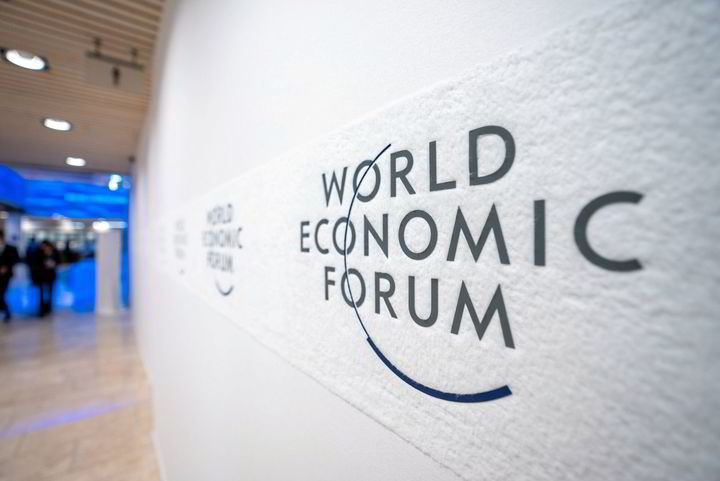Hard-to-abate sectors need to invest nearly $5trn into clean hydrogen to reach net zero: World Economic Forum

Hard-to-abate industries around the globe will have to invest $13.5trn into renewables, clean hydrogen and CCUS (carbon capture, utilisation and storage) infrastructure, in order to reduce emissions to the point where the world can reach net zero by 2050, according to a new report by the World Economic Forum and Accenture.
A total spend of $4.88trn would be needed to build out the infrastructure required for the production and utilisation of green and blue hydrogen in hard-to-abate industries, while the report separately calculates that decarbonising existing grey ammonia is expected to cost an additional $2.62trn.
The vast majority of the projected spend on H2 infrastructure is assigned to decarbonising the aviation and shipping sectors.
Shipping
Shipping in particular is expected to need to spend between $800bn-2.1trn by 2050, around 91% of which would be to build out 160 million tonnes of clean hydrogen production capacity for fuel, in order to reduce sufficient emissions — despite an expected doubling of demand by 2050.
The report notes that engines that can run on methanol are already being used today, while propulsion systems running on ammonia or hydrogen directly are still around two years from reaching commercial availability.
But retrofitting the current fleet and using zero-emissions propulsion systems for new orders is expected to cost shipowners $450bn up to 2050, or $17bn a year — representing 47% of the current capital spend of the industry.
Article continues below the advert
As such, since the total cost of ownership is expected to increase by 30-80%, this is expected to bump up the final cost of shipped products by 1-2% for end consumers.
While this may sound like an insignificant amount, the report warns that “this premium can result in significant absolute cost increases for essential commodities like oil, grains and metals, particularly affecting emerging and developing economies”.
Aviation
Meanwhile, while hydrogen technologies for decarbonising aviation are much further out — with power-to-liquids coming into play from 2025 and hydrogen propulsion systems from 2040 — the report expects a similar scale of spending to pull off this transition.
Clean H2 production for aviation fuel alone is expected to require about $1.1trn to build out 95 million tonnes a year of capacity by 2050, representing 76% of the sector’s total investment necessary to decarbonise.
However, the aviation industry’s total annual capital expenditure of around $78bn a year will have to increase by a factor of 2.4, to $185bn annually by 2050 in order to reach net zero, the report says.
And similar to shipping, the green premium of cleaner fuels is expected to push up prices for consumers. Even fuels made from refined waste fats and oils quadruple the fuel bill for airlines compared to conventional jet fuel, meaning plane tickets will have to increase by 3-12% to offset this extra cost.
When it comes to other industries, the spend on hydrogen — while still substantial — takes a backseat to the investment into clean power necessary to electrify processes.
Trucks
For example, trucking is expected to see a 53-47 split between battery-electric and hydrogen-powered vehicles by 2050, with the report noting that the former is already available for light- and medium-duty transport needs, while H2 trucks may take another two years to be available at commercial scale.
However, some dedicated hydrogen truck manufacturers such as Nikola and Hyzon have already started to deliver vehicles to customers — although both companies are struggling financially after years of losses.
But in order to power these trucks, 680GW of new clean power generation capacity and 50 million tonnes of hydrogen production a year will needed by 2050, at a cost of $1.3trn and $650bn respectively.
“HETs [hydrogen-electric trucks] require access to onsite hydrogen refuelling infrastructure,” the report explains. “To meet the demand for HETs by 2050, an estimated 190,000 refuelling stations will need to be established, incurring costs from $0.3-0.7trn.”
By comparison, battery-electric trucks (BETs) would require investment of $600bn-1trn to build out 11 million electric-vehicle charging stations, although these could also be used by cars and other vehicles.
“For BETs to become feasible for medium and long-haul transport, they need access to charging infrastructure, both on-site and roadside. By 2050, an estimated 11 million charging stations will be required to meet the rising demand for BETs.”
Similar to aviation and shipping, switching to hydrogen-powered trucks is expected to increase costs for fleet owners by 100-300%, compared to a more modest 33-133% rise for battery-electric vehicles — which itself is only expected to result in a 1-3% premium on delivered products to the end-customer.
And the purchase of zero-emission trucks would also require $78bn of annual investment, or 4.33 times the industry’s current capital spend of $18bn a year.
Heavy industry
Steel has often been raised as the sector where clean hydrogen could make the biggest impact in reducing emissions.
However, the report estimates that technology to produce direct-reduced iron using 100% green H2 will not be commercially available until 2028.
Given the processes that can be electrified, such as electric arc furnaces, the report also expects $1.6trn of investment into constructing 830GW of clean power capacity for the steel industry, while $200-890bn will need to be spent on developing 70 million tonnes a year of H2 production by 2050.
However, similar to what investors have told Hydrogen Insight, the World Economic Forum and Accenture expect that while green steel will carry a 40-70% premium per tonne, this will only account for a 0.5% increase in the cost of a passenger car or 2% for buildings.
However, the authors warn that “the largest forecasted increases in steel consumption globally align with the markets with likely the lowest ability to absorb a significant green premium”.
Hydrogen is expected to play a far smaller role in decarbonising cement and aluminium.
In the latter material’s case, the report is even unwilling to put an estimated year on when the required H2 calciners will be on the market, noting that these are still at a very low technology-readiness level. Similarly, hydrogen-fuelled kilns for cement are not expected to be commercially available until 2040.
However, the report still expects cement companies to spend up to $60bn and aluminium firms to spend $120bn on clean hydrogen production capacity by 2050.
Who pays?
For nearly all of the industries mentioned in the report, the authors highlight that, based on current margins and weighted average cost of capital (WACC), they will not be able to absorb the extra costs and generate sufficient returns from making these net-zero investments on their balance sheets alone.
This means that public funding and massive decreases in technology cost will be necessary to make the switch.
And while the green premium on some products may only increase prices by a couple of percentage points, others can be much more sensitive.
For example, the report estimates that a 40-120% increase in the cost of every tonne of ammonia could bump up fertiliser costs by 30%. This could then push up the end cost of food by 15%, “posing a risk to food security”.
However, there is one key exception to this trend.
The oil & gas industry is expected to mainly reduce its emissions via elimination of flaring, prevention of methane leaks, electrification of certain processes and the use of CCS during downstream processing.
Multiple oil and gas companies have also already committed to using clean H2 instead of grey hydrogen produced from natural gas within their refineries, with the report estimating that this would need eight million tonnes of annual production capacity that could cost $30-90bn.
The report notes that the wider $880bn pricetag for reducing oil and gas emissions to align with net zero by 2050, or $33bn a year, “represents only 4-6% of the total annual CapEx [capital expenditure] of the industry, and with industry average profitability of 20% and WACC of 9%, the industry is in a good position to fund its additional CapEx by self-generated cash flows” — ie, without needing to draw on massive government grants.
And when it comes to a potential increase in the cost of oil and gas, “historically, the market has shown limited price elasticity of demand, indicating that it can absorb the required green premiums”, the report notes.
However, it warns that higher oil and gas prices could be a bigger burden to bear for emerging and developing economies, particularly those that import their fossil fuels.






